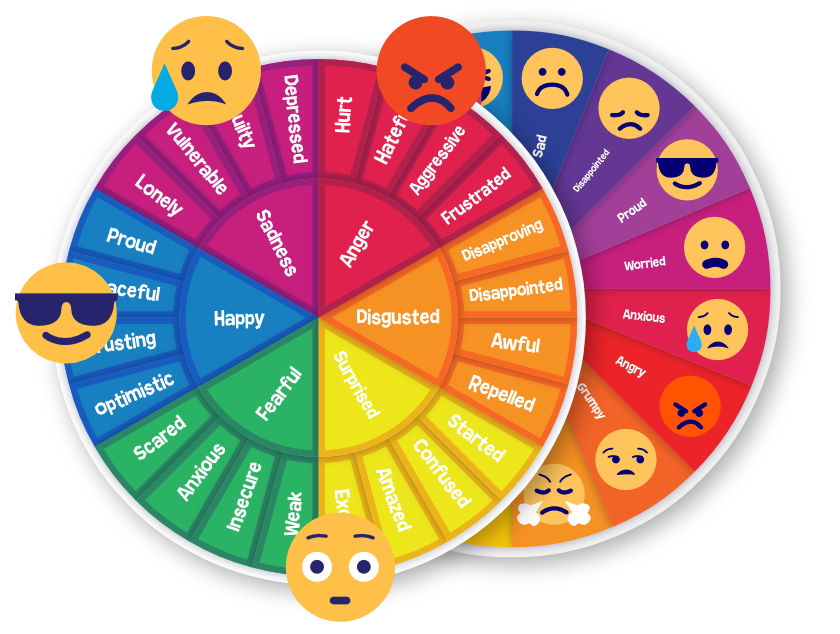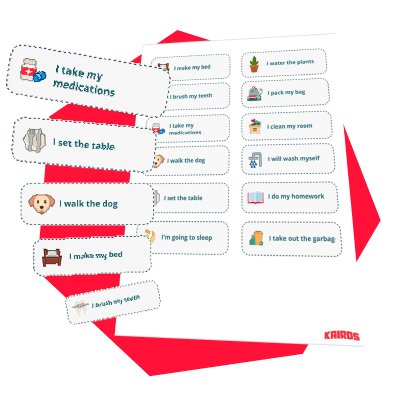ADHD is a condition experienced by millions of people worldwide. While the exact causes of ADHD are currently unknown to medical science, its symptoms are well documented and identifiable. Likewise, several treatment options have been developed in recent years to guarantee people with ADHD have the best opportunities to grow socially as well as professionally.
What is ADHD?

The acronym ADHD stands for Attention-Deficit Hyperactivity Disorder. ADHD is a medical term that refers to a difference in cognition. People with ADHD experience the world in a different way than most people, but this doesn’t stop them from participating and contributing to society.
A study published by the Journal of Global Health acknowledges that more than 5% of people show symptoms that align with an ADHD diagnosis (source). ADHD can be accompanied by other health complications such as learning and sleep disorders.
ADHD does not have an effect on a person’s intelligence and many children diagnosed with ADHD grow up to be university professors, engineers, doctors, and other professions that require organization and attentiveness. In many cases, ADHD has been a driver for incredibly successful people.
Here is a small list of 8 famous people with ADHD:
- Justin Bieber
- Emma Watson
- Michael Phelps
- Michael Jordan
- John Lennon
- Walt Disney
- Shaquille O’Neal
- Simone Biles
With treatment and support, people with ADHD can overcome their condition and perform intellectually-intensive activities with the same ease as their neurotypical peers.
Recognizing ADHD in toddlers
According to research, some behaviors noticed in small children can correlate with the development of an attention deficit condition (source). However, the study itself acknowledges that further research is needed in order to accurately identify the risk factor of ADHD in toddlers. ADHD becomes more evident when children begin to act socially and go to school. Persistent ADHD in children is commonly diagnosed at around 7 years old.
Symptoms of Attention-Deficit Hyperactivity Disorder are difficult to recognize in small children due to the condition being very similar to normal behavior during developmental stages. ADHD symptoms such as being impulsive, having a lack of focus, and being overly energetic are identical to the way of acting of children who don’t show signs of neurodevelopmental disorder.
Symptoms of ADHD are normally first observed during a person’s teenage years, with some patients exhibiting little to no behavioral changes. Due to a lack of mental health information, some people even reach adulthood and develop professionally without realizing they have the condition.
What are the signs of ADHD in children?

The main signs of ADHD in children over the age of 3 are inattention, hyperactivity, and impulsivity. However, a mental health professional will not diagnose a child with ADHD unless those signs are persistent over several months and begin to affect the child’s age-appropriate interpersonal relationships.
Contrary to popular misconception, consumption of sugary foods and too much screen time do not cause a child to develop ADHD (source). While it is unclear what exactly leads to a person developing ADHD, genetics is considered to be a significant trigger for the condition. Some researchers, however, consider the possibility that ADHD is the result of a combination of genetic and environmental factors.
The symptoms of Attention-Deficit Hyperactivity Disorder may change as a child grows. Hyperactive-impulsive symptoms are more common in younger children, but inattention becomes more prominent as they reach elementary school age. Being inattentive is a symptom of ADHD observed more commonly in girls, while the hyperactive-impulsive characteristics of the condition are more prevalent in boys. It is nonetheless possible for a child to develop both types of symptoms. ADHD is more common in boys than in girls.
Inattention
Difficulty paying attention is one of the main signs of ADHD. The inattentive type of ADHD isn’t what most people assume the condition to be, as it has less to do with disruptive and hyperactive behavior and more with loss of attention.
A person with inattentive ADHD has a harder time focusing and being organized, due to no fault of their own. Children who refuse to perform tasks because they are being defiant or don’t understand the instructions they’re given do not have ADHD (source).
Inattentive symptoms of ADHD include the following:

- Being easily distracted by their thoughts or outside stimuli
- Making careless mistakes in homework or other assignments
- Getting bored quickly
- Easily missing details
- Having trouble focusing on a single task
- Losing pencils and other didactic materials
- Having trouble following directions
- Being unable to organize themselves
- Avoiding tasks that require mental effort
- Processing information slower than others
- Slow bodily movement
- Being lost in thought, as if they’re not paying attention
People with inattentive ADHD can function much better at school and work with the help of friends, family, and by attending cognitive-behavioral therapy.
Hyperactivity
Hyperactivity is understood as the state of being overly active. The mind of someone who is hyperactive is always running, so it may become hard for figures of authority to manage the actions and feelings of a hyperactive individual. Symptoms of hyperactivity include fidgeting, tapping, talking, and moving constantly, even when inappropriate.
Due to how easy it is to confuse with unruliness, ADHD was dismissed as a conduct disorder for most of the 20th century. The condition was first identified in the 1980s, which was when the term attention-deficit disorder (ADD) was coined. The hyperactive symptoms of attention deficit disorder were later recognized as prevalent among recipients of the condition, leading to it being renamed ADHD.
Nonetheless, hyperactivity is treatable. With care and support from loved ones, children can drastically reduce their hyperactive behaviors as they age. Early detection and treatment of ADHD can help a patient with symptoms of hyperactivity to live a much more fulfilling and satisfying daily life.
In school-aged children, hyperactive symptoms can present themselves in the following ways:
- Showcasing a fidgety and squirmy behavior
- Inability to remain calm during activities that require the child to sit still, such as eating or reading
- Talking excessively and making noises
- Being constantly on the move, such as running from toy to toy
Impulsivity
Impulsive behavior is characterized by having problems with self-control and acting without thinking. It is often perceived as a lack of patience. Impulsiveness also means that a person is prone to look for immediate rewards and has trouble delaying gratification. Common traits of impulsive behavior include interrupting others and making decisions without regard for long-term consequences.
Impulsive behaviors that may indicate a child has ADHD include:
- Having little patience towards others
- Refusing to wait their turn
- Interrupting others in the middle of their speech
- Answering questions before being asked and finishing other people’s sentences
- Intruding on other people’s activities without asking for permission
- Making remarks at inappropriate times
- Having trouble controlling their emotions
- Being predisposed to emotional outbursts
Tips for parents of kids with ADHD
Just like all children, kids with ADHD need a sense of order and direction. If your child happens to have ADHD, there are actions you can take to improve their cognitive and emotional development.
- Create a daily routine and a schedule: Children with ADHD should have a steady daily routine to follow, from waking up until they go to sleep. Their schedule should be on display somewhere special around the house, like on a bulletin board or on the refrigerator.
We’ve built a free routine chart that you can download here.
- Teach organization: All of your child’s things, such as their toys and their clothes, should have their own place. In the same vein, their schoolwork and school materials should also be kept organized. Teach your child the importance of writing down important information and double-checking his/her things in case he/she forgets something.
- Clearness and consistency: The rules that kids with ADHD follow must be consistent and easy to understand.
- Giving praise: Positive reinforcement will do much to help a child with ADHD. Not only are kids with ADHD making an extra effort to accomplish their tasks, but they may also feel vulnerable towards criticism. Praising their good behavior will help them learn to better regulate their emotions.
Resources for your child with ADHD
You can help your child develop his/her autonomy and turn everyday chores into fun experiences with the Kairos app. Support your family’s mental health and have fun together while teaching your kids how to be independent. Kairos is a fun and exciting video game that tasks your child with saving the planet from an evil alien menace. By performing a combination of virtual and real-life activities, your child will unlock cool superpowers and cosmetic options to customize his/her in-game avatar.
Parents can easily use the app to accommodate their child’s daily schedule, setting up reminders to notify their kids whenever a new task needs to be completed. Parents also have easy access to monitor their child’s progress and accomplishments. The app’s dashboard lets parents know what their child is doing and what they can do to help them complete their tasks.
Kairos is available for download on Google Play and the Apple App Store. Parents can also make use of the free resources found on the Kairos website to supplement their child’s activities.
Routine Charts

Get daily routine charts ready to print and use! The charts are easily editable, so parents can add their children’s morning, lunch, evening, or bedtime routines, giving them an engaging way to learn how to manage their chores and their time. Weekly or monthly rewards in the form of new superpowers motivate children to stay on schedule.
Routine Cards
Make your child’s schedule easy to understand with daily routine cards. The cards include the most common tasks a child may perform in their daily schedule, such as dressing themselves, doing their homework, taking a shower, and more. Moreover, the cards have space for parents to add their own custom tasks and descriptions, according to the particular needs of their children.
Emotion Wheels

Properly dealing with emotions is one of the hardest challenges of childhood. The emotion wheels can help children of all ages identify how they feel and deal with those emotions in a positive way. By using the wheels, children can improve their emotional vocabulary. This can help children with ADHD to better communicate their emotions. Even adults can use the emotion wheels to open up and support their mental health.
